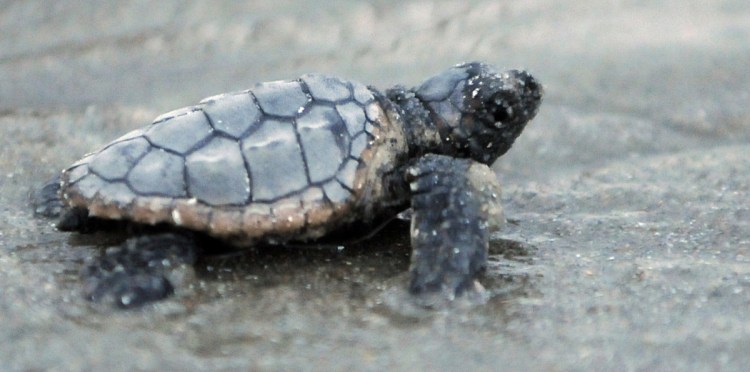CHAPEL HILL, N.C. — Research from North Carolina biologists shows that loggerhead sea turtles use the Earth’s magnetic fields to navigate back to their home beaches.
But sometimes, another beach has such a similar magnetic field that the sea turtles head to that one instead, as if their internal GPS has just slightly mixed up addresses – even if the beaches are far away from each other.
A new study from University of North Carolina biologists Kenneth J. Lohmann and J. Roger Brothers shows that loggerhead sea turtles that nest on beaches with similar magnetic fields are genetically similar to each other.
In fact, according to the research, magnetic fields are the strongest predictor of genetic similarity among nesting loggerhead sea turtles, no matter how far away or dissimilar their home beaches are.
This new finding supports previous research from Lohmann and Brothers that indicated adult sea turtles use magnetic fields to find their way back to the beaches where they themselves were hatched.
The new research implies that sometimes, the sea turtles mistakenly nest at a beach with a similar magnetic field, even if that beach is far away from their home beach – such as on the opposite coast of Florida.
The research could be helpful in conservation efforts for the turtles. Conservationists can take into account the importance of a beach’s magnetic field for attracting loggerheads, and understand that sea walls, power lines and large beachfront buildings can alter the magnetic fields, possibly changing the “address” in the turtle’s internal “GPS.”
And the research is of particular relevance to North Carolina, since it explains how loggerhead sea turtles hatched on Tar Heel beaches find their way back home after migrating across the entire Atlantic Ocean basin.
Send questions/comments to the editors.



Success. Please wait for the page to reload. If the page does not reload within 5 seconds, please refresh the page.
Enter your email and password to access comments.
Hi, to comment on stories you must . This profile is in addition to your subscription and website login.
Already have a commenting profile? .
Invalid username/password.
Please check your email to confirm and complete your registration.
Only subscribers are eligible to post comments. Please subscribe or login first for digital access. Here’s why.
Use the form below to reset your password. When you've submitted your account email, we will send an email with a reset code.